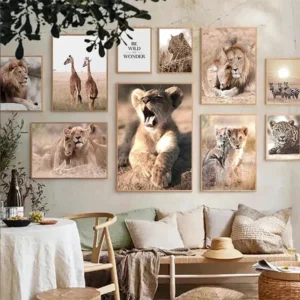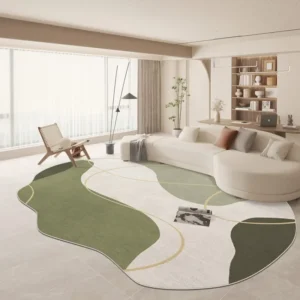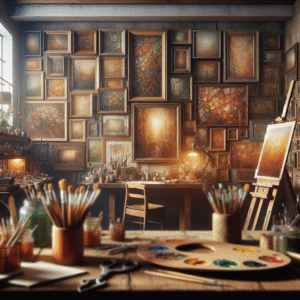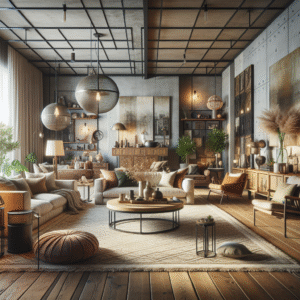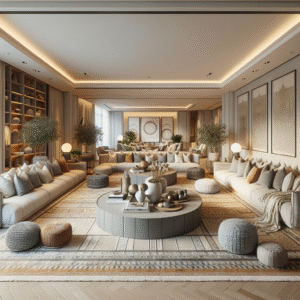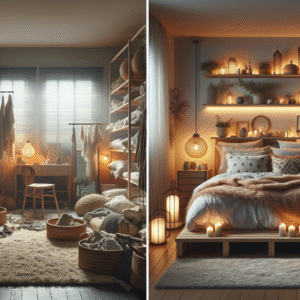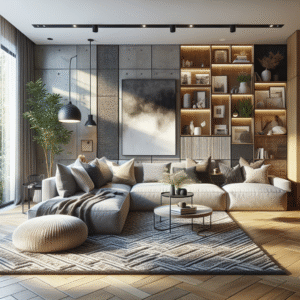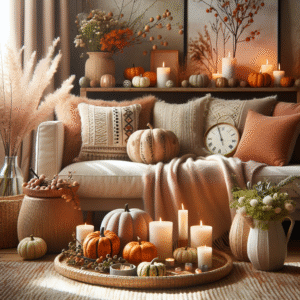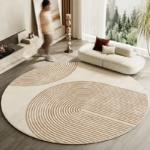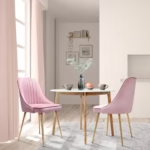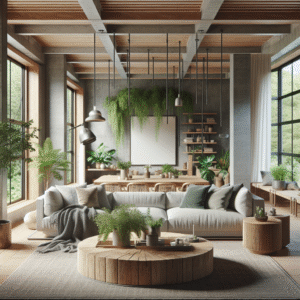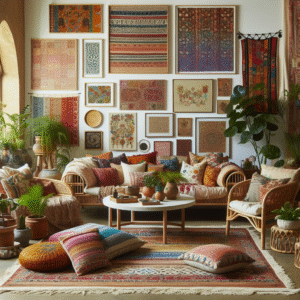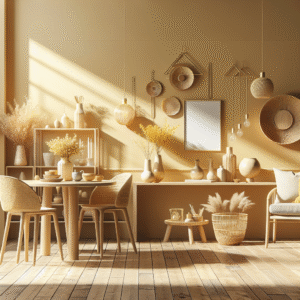Unlocking Charm: Mastering Texture Layering to Transform Small Spaces
Let’s Talk Texture
When it comes to small spaces, texture is everything. It’s like the secret ingredient in your grandma’s recipe; it adds richness and depth to what might otherwise feel bland or one-dimensional. You know what I’m talking about! Think of your favorite cozy nook—what makes it feel inviting? Often, it’s not just the colors or furniture, but the layers of texture that invite you in.
The Basics of Texture Layering
Before we jump into the nitty-gritty, let’s clarify what we mean by texture layering. In design, layering textures involves mixing materials like fabrics, woods, stones, and metals to create a multi-dimensional environment. It’s about more than just appearances; it’s about evoking feelings, memories, and even fantasies!
Choosing the Right Textures
Now, how do you pick the right textures for your space? This can be a bit daunting, especially if you’re not sure where to start. Here’s the thing: think about the mood you want to create. Do you want something warm and inviting? Go for soft throws and knitted pillows. Prefer a sleek modern vibe? Consider leather and polished metals.
Fabric Variation
Let’s not forget about fabrics. Mixing textures such as linen, cotton, and velvet can create an inviting atmosphere. Imagine curling up on a plush velvet sofa with a knitted blanket draped over it. It’s all about the contrasts!
Layering Techniques to Try
Okay, let’s get our hands dirty. Layering isn’t a one-size-fits-all approach; it’s about finding what feels good for you and your unique space. Here are some techniques that can elevate your small area into a textural wonderland.
Start With a Base Layer
Begin with a base layer—this could be your walls, floor, or large furniture pieces. For instance, if your walls are painted white, consider adding a textured wallpaper or wood paneling. It’s a game-changer!
Add in Mid Layers
Mid layers include things like rugs and curtains. A plush area rug can usher in warmth and define spaces in your small areas. You could pair something sleek with a fluffy texture—like a jute rug under a soft sheepskin throw. This creates visual depth.
Final Layers: Accessories and Accents
The cherry on top? Accessories. Think cushions, throws, and even wall hangings. You can mix different patterns and materials. Maybe a silk cushion next to a knitted one? Give it a whirl! Just ensure that while there’s variety, there’s also a coherent color palette to tie everything together.
Color and Texture: Best Buddies
Color and texture go hand in hand. A bold navy hue might look stunning with a natural wood finish, while a soft blush can pair beautifully with a chunky knit. When picking colors, ask yourself: how do I want to feel in this space? Calm? Energetic? Cozy?
Practical Tips for Smaller Areas
Working with a small space? Don’t worry—you’ve got options! One trick is to use mirrors to reflect textures, making the place feel bigger. And remember, less is often more. Rather than overcrowding with textures, select a few that speak to you and layer them thoughtfully.
Smart Storage Solutions
Sometimes accessories can clutter a small area. Smart storage solutions, like wall-mounted shelves or multifunctional furniture, can help maintain a clean aesthetic without sacrificing style. Use woven baskets as stylish storage—easy on the eyes and functional!
Embracing the Playfulness of Texture
Honestly, texture layering is an art form. Don’t be afraid to play around! Switch things up according to seasons, moods, or even your whims. Textures can bring unexpected joy; layers can surprise you in the most delightful ways.
Seasonal Textures for Small Spaces
As the seasons change, so should your textures! In winter, think snuggly fleece and warm wool. Come spring, lighten things up with airy linens and colorful cottons. It’s a fantastic way to keep your space inviting and fresh—all year long.
Real-Life Inspirations
Let’s bring this to life! Have you seen how some influencers mix styles? They often pull together vintage finds with modern pieces, layering textures that give their small spaces loads of personality. It’s a beautiful reminder that your space should reflect you—quirks and all!
The Emotional Impact of Textures
Believe it or not, textures affect our emotions. Touching a soft fabric can evoke comfort, while sleek, cool materials can feel refreshing. Create a balance that resonates with you, fostering a sense of peace in your home. After all, your living space should be a refuge, right?
Texturing Your Walls and Floors
Your walls don’t have to be flat, white sections of boredom—let’s think outside the drywall box! Consider textured finishes or engaging wallpapers. As for floors? Rugs can add dimensionality in an instant. You might even want to consider patterned tiles if you’re aiming for something truly striking.
Bringing It All Together
As we come to a close, remember that mastering texture layering is a delightful journey, not a race. Take your time finding pieces that speak to you, and gradually cultivate your cozy small space haven.
Ready, Set, Layer!
So, are you feeling inspired to give your small space a charming texture makeover? Just remember—texture layering is about exploration and expression, so have fun with it. Happy decorating!
Frequently Asked Questions
<h3 class="faq-question">**What are the best textures to use in a small space?**</h3>
<div class="faq-answer">
<p>Soft fabrics like cotton, velvet, and wool work wonderfully! Incorporating wood and natural fibers adds warmth, while metals can introduce a modern touch.</p>
</div>
<h3 class="faq-question">**How do I avoid a cluttered look with texture?**</h3>
<div class="faq-answer">
<p>Stick to a cohesive color palette and choose only a few key textures. Balance can create a lovely sense of harmony without overwhelming the senses!</p>
</div>
<h3 class="faq-question">**Can I layer textures in a rental space?**</h3>
<div class="faq-answer">
<p>Absolutely! Choose removable wallpaper or temporary flooring options to add texture without permanent changes. Accessories like rugs and throws are easily transportable too.</p>
</div>
<h3 class="faq-question">**Are some textures better suited for specific seasons?**</h3>
<div class="faq-answer">
<p>Yes! Thicker, cozier textures are great for colder seasons, while lighter, airy fabrics feel refreshing in warmer months. Switch it up for a seasonal vibe!</p>
</div>
<h3 class="faq-question">**What’s the role of lighting in texture layering?**</h3>
<div class="faq-answer">
<p>Lighting can highlight textures beautifully! Use both ambient and accent lighting to create depth, casting shadows that enhance your layered look.</p>
</div>
<h3 class="faq-question">**How can I add texture without spending too much?**</h3>
<div class="faq-answer">
<p>Think DIY! Upcycle old furniture with some paint or new fabrics. Thrift stores can be treasure troves for unique, textured items at a fraction of the cost.</p>
</div>DISCLAIMER
This content is meant for informational purposes only. Always consult with a professional designer or decorator for personalized advice.
Categories
- Accent Walls & Ceilings (10)
- Art Curation & Gallery (25)
- Bedding Style Trends (41)
- Bedroom Makeover (30)
- Bohemian & Eclectic Styles (10)
- DIY & Budget-Friendly Decor (9)
- Eco-Friendly Design (10)
- Furniture Care (29)
- Home Decor & Design Ideas (101)
- Home Wellness Spaces (10)
- Integrated Outdoor Living (9)
- Kids and Nursery Decor (10)
- Living Room Decor (30)
- Minimalist & Japandi Style (13)
- Mix & Match Techniques (29)
- Modern & Contemporary Design (9)
- Rug Sizing & Placement (29)
- Seasonal Home Decor (32)
- Small Space Solutions (14)
- Wall Art & Painting Tips (32)
Recent Posts
Recent Comments
Archives
Product Gallery
-
 African Grassland Animal Scenery Poster Autumn Canvas Painting Lion Zebra Giraffe Prints Pictures for Modern Home Room Decor
African Grassland Animal Scenery Poster Autumn Canvas Painting Lion Zebra Giraffe Prints Pictures for Modern Home Room Decor
-
 Large Area Green Rugs for Bedroom Nordic Living Room Decoration Shaped Carpet Irregular Plush Lounge Rug Home Thick Washable Mat Rated 5.00 out of 5$57.07 – $359.83Price range: $57.07 through $359.83
Large Area Green Rugs for Bedroom Nordic Living Room Decoration Shaped Carpet Irregular Plush Lounge Rug Home Thick Washable Mat Rated 5.00 out of 5$57.07 – $359.83Price range: $57.07 through $359.83 -
 Nordic Style Rugs for Bedroom Morandi Living Room Decoration Carpet Large Area Geometry Lounge Rug Home Cloakroom Non-slip Mat Rated 5.00 out of 5$40.98 – $620.81Price range: $40.98 through $620.81
Nordic Style Rugs for Bedroom Morandi Living Room Decoration Carpet Large Area Geometry Lounge Rug Home Cloakroom Non-slip Mat Rated 5.00 out of 5$40.98 – $620.81Price range: $40.98 through $620.81





